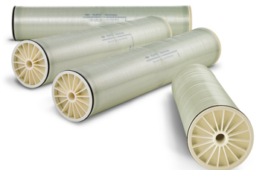A
chance observation by a Queen’s researcher might have ended a
decades-old debate about the precise way antifreeze proteins (AFP) bind
to the surface of ice crystals.
“We
got a beautiful view of water bound to the ice-binding site on the
protein,” says Peter Davies, a professor in the Department of
Biochemistry and a world leader in antifreeze protein research. “In a
sense we got a lucky break.”
AFPs
are a class of proteins that bind to the surface of ice crystals and
prevent further growth and recrystallization of ice. Fish, insects,
bacteria and plants that live in sub-zero environments all rely on AFPs
to survive. AFPs are also important to many industries, including ice
cream and frozen yogurt production which relies on AFPs to control
ice-crystal growth.
The
implications of this finding reach far beyond creating low-fat, high
water-content ice cream that maintains a rich, creamy texture. Having a
clear idea of how AFPs bind to the surface of ice crystals would allow
researchers and industries to engineer strong, versatile AFPs with
countless commercial applications ranging from increasing the freeze
tolerance of crops to enhancing the preservation of transplant organs
and tissues.
While
determining the crystal structure of an AFP from an Antarctic
bacterium, biochemistry doctoral candidate Christopher Garnham was
fortunate enough to see an exposed ice-binding site—a rare find in the
field of AFP crystallography that Mr. Garnham studies.
The
ice binding surface of an AFP contains both hydrophobic or ‘water
repelling’ groups as well as hydrophilic or ‘water loving’ groups. Until
now, the exact function of these counter-acting forces with respect to
ice-binding was unknown.
While
the presence of water repellent sites can appear counterintuitive on a
protein that bonds with ice, Mr. Garnham and Dr. Davies are
hypothesizing that the function of these water repellent sites is to
force water molecules near the surface of the protein into an ice-like
cage that mirrors the pattern of water molecules on the surface of the
ice crystal. The water-loving sites on the protein’s surface then anchor
this ice-like cage to the protein via hydrogen bonds. Not until the
ordered waters are anchored to the AFP is it able to bond to ice.




